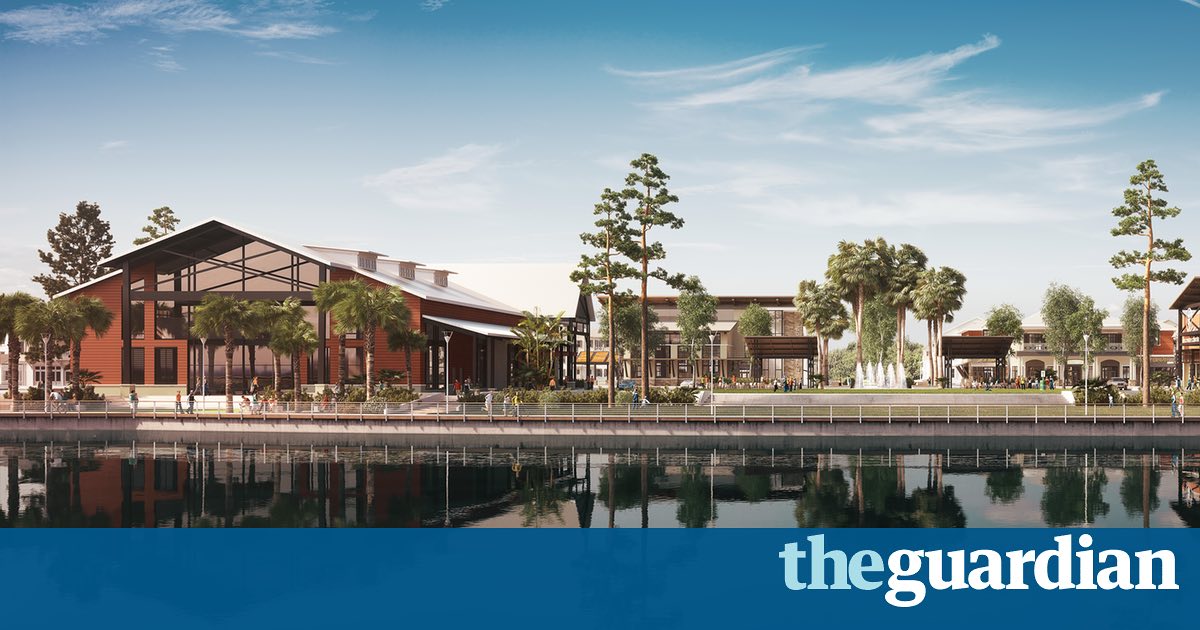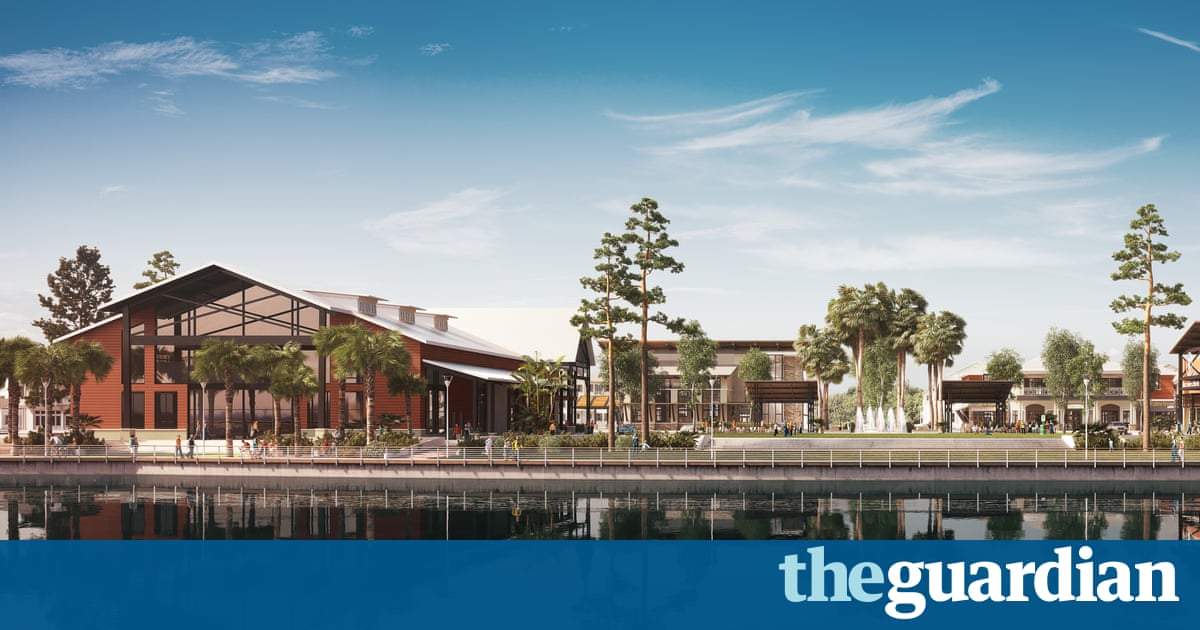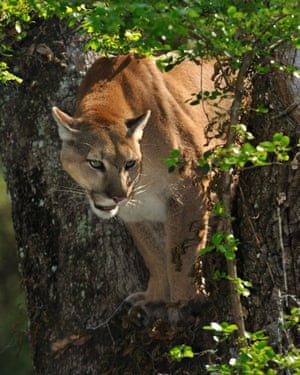The solar-powered town: a dream for the environment or a wildlife nightmare?

Babcock Ranch, the brainchild of ex-NFL player Syd Kitson, aims to be a model of sustainability but campaigners fear it will be tragic for endangered panther

Florida real estate has a bad habit of reflecting the boom-and-bust cycles of the US economy but Babcock Ranch, a new development opening early next year and designed to be the worlds first solar-powered town, is hoping it can provide the Sunshine state with a model for sustainable living.
That, at least, is the hope of Syd Kitson, a former offensive guard with the Green Bay Packers turned real estate developer, who is behind an ambitious project that Kitson describes as the countrys most sustainable, most innovative and health-focused new town in the US.
Bordered by the Babcock Ranch preserve and the 65,000-acre Cecil M Webb wildlife management area, Babcock Ranch is at the centre of south-west Floridas newest growth corridor, just 20 minutes east of downtown Fort Myers.
Kitson and his backers bought the estate for more than $500m in 2006 from the heirs of Edward Vose Babcock, a former mayor of Pittsburgh. The developer sold 73,000 acres to the state, creating the preserve, and designated 18,000 acres to the development and 9,000 acres to parkland.
At its completion, Babcock is expected to grow to 19,500 homes, with a downtown with commercial space and extensive infrastructure, including a 75-megawatt solar facility generating electricity for the town, self-driving cars, groves of oak and natural plants for landscaping, community and kitchen gardens, a farm-to-table restaurant, a charter school and an extensive network of lakes and irrigation designed to reduce the developments environmental impact.

I want to prove that development and preservation can work hand in hand, says Kitson. You see the carelessness of new developments in terms of energy consumption, care for the environment, how you think about energy, technology, transportation, theres a responsibility on us to prove it can be done differently.
But can it? Florida is expecting population growth of 6 million by 2030. Many of the states natural resources are under pressure from environmental degradation, including from sea level rise and overuse of ground water. Babcock is 20ft above sea level, and built on land that had been disturbed by rock mining.
Kitsons plan was to make Babcock sustainable from the outset. Gone are energy-draining McMansions and water-demanding lawns. The houses are designed smaller in scale, with dining rooms eliminated, and built in traditional Floridian ranch style with front and back porches.
Were looking at the average house performing 10-20% better than Florida energy code, says Dr Jennifer Languell, a green practices adviser on the project. Ultimately, however, theres no way to get around the demand for air conditioning in Floridas environment.
We can create airflow through the house, but the bottom line is we have to address the humidity and the only way to get the moisture out is to mechanically remove it.
Kitson says he toured large-scale communities to see how sustainability could be incorporated into real estate developments, including Serenbe on the edge of Atlanta; he travelled as far as Abu Dhabi in the process. Kitson says surveys he commissioned revealed that people want to be part of something that is sustainable, and want to know that where theyre going to live is not only not harmful to the environment but actually helps it.
Kitson says his determination was to create a sustainable community that functioned as a complete community. Its about a well-rounded good life, he says, not about being locked away from the world. Its kind of like going back to the way things used to be.
But how much of that is feasible? Egrets and a large alligator moving through a channel in the Babcock preserve suggest that the 10-year delay in starting the development has been beneficial to indigenous species. Kitsons environmental projects include placing a pollinating garden around the solar field to attracting bees and beetles to help the environment and sustainability; the Babcock plans envisage landscaping that can be beautiful but not thirsty.
One expectation is that by using a network of driverless cars, Babcock residents will ultimately scale back on car ownership, bring a familys auto needs down from two cars to one, allowing land that would be used for multi-car garages to be reassigned.
Still, the development of land in south-west Florida is controversial. Babcock lies close to one of the last habitats of Floridas dwindling panther population. Wildlife groups say the Babcock development risks cutting off the big cats passage between the two parcels of land large enough to support a population.
A 2006 report by the Fish and Wildlife Service found there would be no direct effect in the form of mortality or injury of the Florida panther resulting from this project. But it is feared that additional habitat loss from development of land around Babcock, and injury to the animals from traffic and illegal hunting, will further reduce the viability of the population.
The Florida panther is an endangered species and this development is locking them into a small area, says Matthew Schwartz of the South Florida Wildlands Association. Roadkill and habitat loss is just destroying the population because it has nowhere to expand into.
Schwartz says the town of Babcock Ranch is going smack into what the Fish and Wildlife Service identified as a possible expansion area. Thats tragic not only for the panther, but for black bears, eastern indigo snakes, red-cockaded woodpeckers and a whole range of species living under its umbrella.
The environmentalist says the threat to wildlife is not simply the development of Babcock itself, but the development of surrounding areas.
They say theyre only using land that was previously disturbed but other private lands nearby will also be developed once people start moving in. People will want movie theaters and shopping centres, all the things that are part of urban sprawl. This project is making undeveloped habitats around it much more vulnerable.
The developers didnt need to come into undeveloped habitat to start a solar project there are plenty of communities they could have retrofitted with solar, Schwartz adds.
When Babcock opens to the public early next year, it will be greeted as a new model town. How far it can serve as a model for a more sustainable future remains open to question.
Its an experiment, says Kitson. Ive spent half my life hiking, camping, being part of nature. A lot more people are thinking about how theyre living and how theyre affecting their environment. We have a unique opportunity to create a place in a way that hasnt been done before. If we can get it right, we think its going to set a standard.